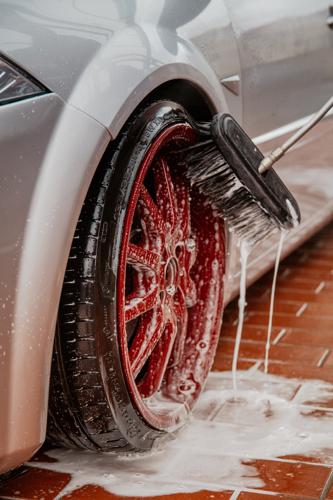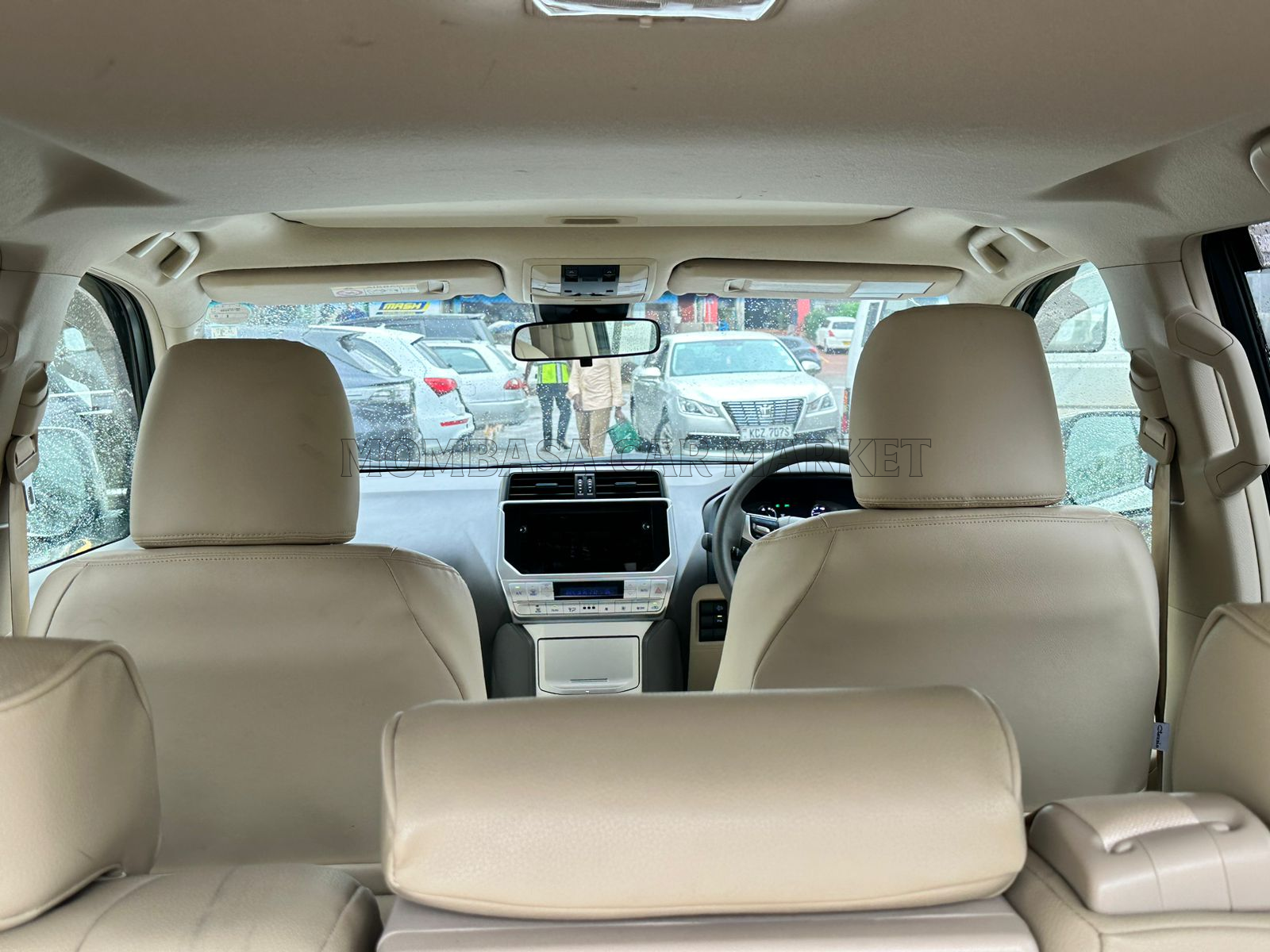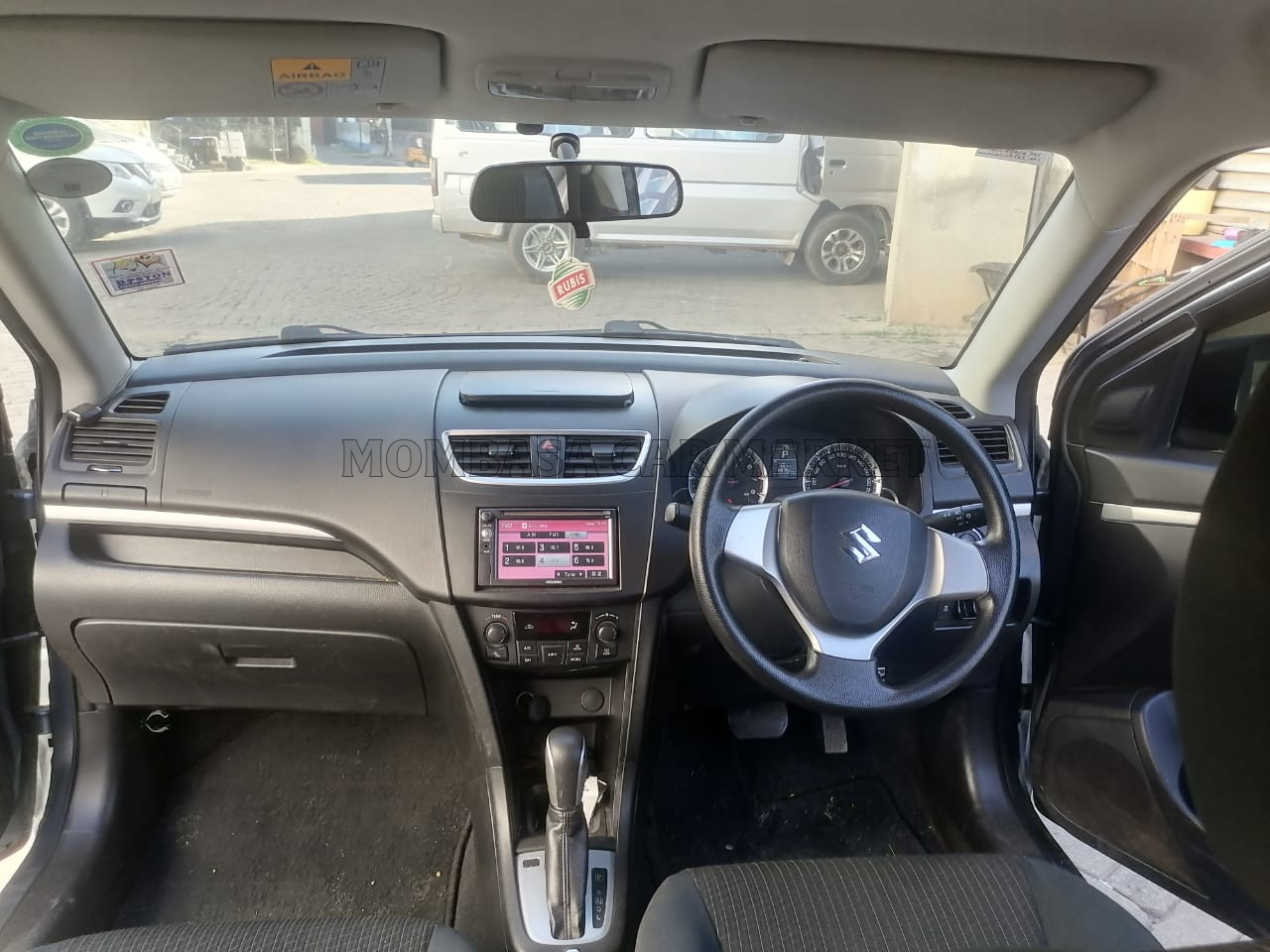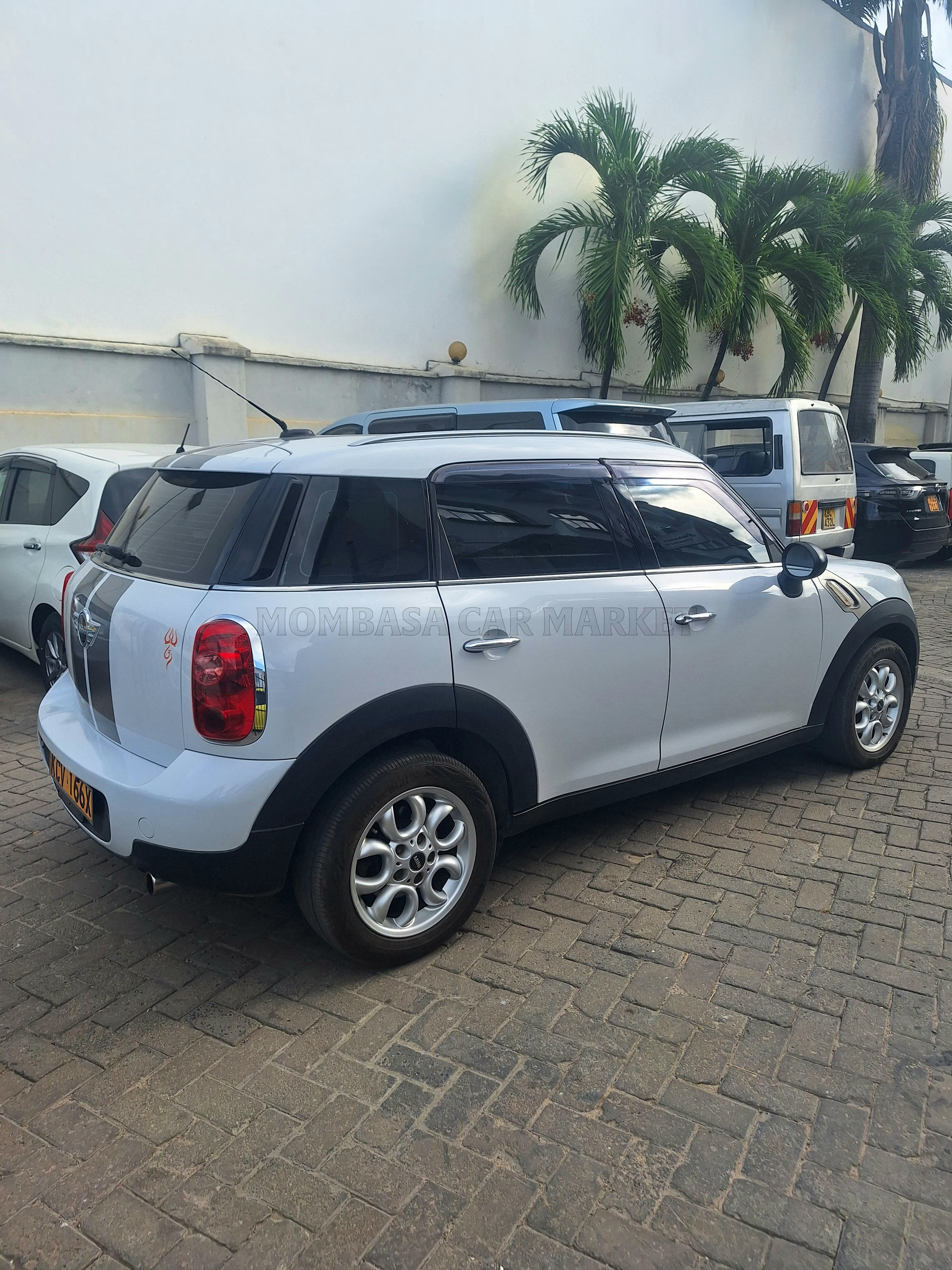
10 Car Cleaning Hacks for a Happy Life!
Clean your car regularly to help with the general maintenance of your car as well as your health and well-being. With a little regular care and attention you can keep it looking as good as new for years to come. Doing that will not only be personally satisfying, it can make your car more attractive to buyers when the time to sell comes.
How often you need to clean your car's interior depends on your driving conditions and lifestyle. If you have kids and pets, your car's interior will require more regular cleaning. You can prioritise cleaning some spaces of your car more frequently. Clean the insides of your windows and windshields weekly or daily as needed to improve visibility on the road, especially in dusty conditions. Disinfect high-touch surfaces often and be sure to clean food and drink spills quickly after they happen to prevent bacteria and bugs from moving into your vehicle.
Consider using natural DIY products which are better for your health, the environment and your pocket. For example, using a cleaning Spray Bottle with water, lemon and vinegar in a spray bottle can be used occasionally for a reliable car cleaning. Vinegar and lemon are great cleaning agents but can also be corrosive, so use sparingly. Using baking soda and water as a great organic paste for cleaning tires. Using natural scents to deodorise your car among other hacks listed below:
1. Floor Mats
First, remove all the trash from your car, then take out your floor mats; if you're going to wash your floor mats with water and cleaner, it's a good idea to do this step early in the cleaning process so they have time to dry while you detail the rest of your car's interior.
When you take your floor mats out, shake them outside to remove large crumbs and other debris. Run the vacuum to collect dirt embedded in your mats. If you have carpeted mats, apply a carpet or upholstery cleaner by following the instructions for the product. If you don't have a good place to hang the mats, lay out a tarp or drop cloth instead of putting them on the ground.
For rubber, silicone, or vinyl, you can use a hose to wash away excess dirt and soil. To wash more thoroughly, use a rubber floor mat cleaner. Another option is to add some dishwashing soap to a bucket of warm water and use a scrub brush to clean the mats. Rinse them thoroughly to get any remaining soap off and let them air-dry.
With the floor mats removed, run your vacuum throughout the interior of your car. Use the attachments to get into those hard-to-reach corners, like your cupholders and the space between your windshield and dashboard. Don't forget to run the vacuum over your seats to collect all the sneaky bits of dirt and crumbs.
2. Exterior
Before bringing out the hose and bucket go around the car looking for any deposits you might have missed and gently remove them. Wash it by hand using a mild detergent. Car wash detergents take away the wax and polish on the paint surface as well as the dirt and grime, so use one that's gentle on your paint. Thoroughly rinse the car when you've finished to wash away any detergent left. Alternatively you can combine quarter cups of baking soda and dish soap (without petroleum) in a 4l of water. When you’re ready to wash your car, shake it up and then pour about a cup of the solution in a bucket. Wash and rinse as usual.
Don't walk away and leave your car to air dry when you've finished washing it, dry it using a chamois or a microfiber cloth, lay it out flat on the surface and pull it across the panel so that it can absorb the maximum amount of moisture. Squeeze out the excess moisture after each pass and repeat the process until you've dried every panel. When you've finished rinse out the chamois or cloth to clean it and put it away in its case until the next time it's needed.
Polishing your car not only makes it look good, it also protects the painted surface. This can be done twice a year. Use a quality polish and apply it with a quality applicator made for the purpose, follow the instructions that come with the polish, and remove the polish using a soft, clean rag that won't scratch the paint. Don't attempt to polish the whole car in one go, do it panel by panel, or if it's a large panel do it a section at a time.
Commercial car washes are convenient, but they can easily damage your car's paint. Ask about the detergents they use, and the cleanliness of their water before you use them. Don't use them if they use brushes or anything else that comes into contact with the surface of your car. The brushes aren't necessarily clean, the detergents they use can be harsh, and the water isn't necessarily clean either.
3. Windshield and Windows
White vinegar and water is a great cleaner for glass and the smell goes away in minutes. Simply mix equal parts of vinegar and water in a spray bottle and apply it to the windows. Then, use crumpled newspaper to wipe the windows clean and it will be streak-free. Alternatively you can use an alcohol-based glass cleaner, to wipe the insides of your windows and windshields.
Never use products that aren't made to clean glass. When using glass-cleaning products inside your car, try to use two microfiber cloths. Spray the product on one cloth and use it to apply the cleaner to the glass. This stops particles from the cleaner getting onto other surfaces inside your car where they might cause buildup and damage. Use the second cloth to wipe the glass clean. This strategy helps you reduce streaking, and a microfiber cloth saves your glass from abrasions.
4. Headlights
To restore the clarity and brightness of your car’s headlights, clean them with toothpaste. Apply a small amount of toothpaste to a cloth and rub it into the headlights. Then, rinse the headlights with water and dry them with a clean cloth.
Keep the toothpaste in your car as it comes in handy while wiping off small scratches on the car paint and you can of course use it to brush your teeth, fresh breath and a clean smile are important.
5. Wheels and Rims
Cleaning your car’s wheels and rims is easy with a solution of warm water and dish soap. Simply mix the water and soap in a bucket and use a soft-bristled brush to scrub the wheels and rims. Rinse the wheels and rims with water and dry them with a clean cloth.
Alternatively you can use the baking soda and non petroleum dish soap solution. Wash and rinse as usual. Then dry off with a soft cloth and squeegee excess water.
6. Body and Dashboard
While the vacuum is great for picking up some of the dirt and dust in your car, it may be too large to navigate the smaller areas of your dash. Use a duster or microfiber cloth to clear your dash and vents of smaller particles. Dusters and microfiber cloths are soft enough that they won't scratch your vents, and they're designed to capture dust rather than spreading it throughout your vehicle.
After removing the dust from your dashboard, use disinfecting wipes to kill germs and bacteria living on your dash. Avoid using any bleach-based products and always read product labels carefully before using chemicals in your car. Crumbs, spills, and everyday use can cause bacteria to thrive on your dash, particularly on high-contact surfaces, so make a regular habit of disinfecting these areas. Keeping your dash clean can prevent the spread of illnesses to keep you and your passengers safe and healthy.
Similar to your dashboard, it's important to remove dust, dirt, and debris from your console. Be careful when cleaning areas like your gear shift, infotainment panel, and console controls. The climate control and radio buttons embedded in your console may be sensitive, so be gentle when dusting and disinfecting them.
If your vehicle has an infotainment screen, avoid using any ammonia-based products to clean its surface. Since most manufacturers use plastic for infotainment touchscreens, ammonia-based glass cleaners can damage the surface, particularly if it's treated with an anti-glare or anti-fingerprint coating. Instead, you can clean the touchscreen with a microfiber cloth dampened lightly with distilled water.
A steam cleaner is a powerful tool for deep cleaning your car’s interiors. The high-pressure steam can effectively remove dirt and grime from carpets, seats, and other surfaces, without the use of harsh chemicals. This is a great option for those who prefer a more natural and eco-friendly approach to cleaning.
Line a plastic cereal container with a grocery bag and use it as an in-car trash can at the back of the car, this is especially useful for long drives with the family. Keep all of your important car documents, such as your licence, insurance card, and owner’s manual, organised and clean by keeping them in an organiser in the glove box.
7. Take Care of Seats
Clean your seats, first by using the vacuum with the hose attachment to remove crumbs and other debris. Then use the right products for your seat material to clean them. For leather seats, wipe the seats with a leather cleaner manufactured with cars in mind. Follow the instructions on the product and consider doing a follow-up treatment with a leather conditioner to keep things supple, soft, and shiny.
Leather upholstery can also be conditioned and protected with a small amount of olive oil. Simply apply a small amount of oil to a microfiber cloth and gently rub it into the leather. The oil will help to condition the leather and protect it from cracking and fading.
With cloth seats, look for any stains you need to remove. Choose a stain removal product and follow the package instructions to apply, set, and rinse the product. Apply an upholstery cleaner over the entire seat. A scrub brush can help you work the product into the seat to achieve a deeper clean. Rinse the product using a microfiber cloth dipped in water, but avoid soaking the seat since wet seats may encourage mould growth. If needed, blot away excess water with a dry towel before letting the seats air dry.
Vinegar is another popular solution for cleaning, baking soda is a great spot cleaner and lemon juice makes everything smell good. Combine those three ingredients in a spray bottle (a cup of soda, half cup vinegar and quarter cup of lemon juice) plus a few squirts of non petroleum dish soap and you can clean everything inside the car, including the trim. Spot test mixture on the fabric in an inconspicuous place first, to ensure compatibility.
A lint roller is an easy and effective way to pick up pet hair and other debris from car upholstery. Simply roll the lint roller over the affected areas to remove the hair and other debris.
A soft-bristled toothbrush can be used to clean hard-to-reach crevices and air vents in your car. This is a simple and effective way to remove dirt and debris that can accumulate in these areas over time.
8. Cupholders, Door Panels, and Steering Wheel
Take care of your cupholders, door panels, and steering wheel by removing dust and disinfecting these surfaces. If you have removable cup holders, take them out and wash them in warm water with some dishwashing soap. Use a sponge or soft-bristled brush to give them a good scrub to remove any residue. You can use disinfecting wipes to clean your door panels and steering wheel, which are both high-touch places in your vehicle.
Line your cupholders to minimise the amount of dirt that ends up in them by placing silicone or paper muffin cups at the bottom of each cup holder. When they get sticky or dirty, you can just swap them out for clean ones.
Keeping a small packet of car interior wipes in the car makes it easy to get rid of grime before it has a chance to set
9. Boot
Just as with the rest of the interior, vacuum the boot and wipe it clean with an appropriate cleaner. Take this opportunity to get rid of any stains with a soft brush and cleaner as mentioned above.
Once dry, organise the contents of your boot by using a box to carry safety equipment, washer fluid, jumper cables, cleaning materials and such. It keeps them from rolling around noisily in the back of the car, which can be very distracting.
Consider having a small suitcase to pack your clothes, skin care products and shoes if you travel a lot or need to change clothes often. Much better than having a messy back seat.
10. Deodorize
Get rid of funny smells with baking soda, activated charcoal, and air fresheners. You can add baking soda or activated charcoal with a few drops of your favourite essential oil into a lidded plastic container, slice a few vents into the lid and tuck it securely under one of your seats, or use a gel air freshener.
Another option is to purchase a commercial air freshener to free your car from random smells. A car diffuser is also a perfect tool for the job, just add a few drops of your preferred essential oil(s) to the pad and plug it in to keep your car smelling fresh.
A natural hack is keeping a small container of black tea in your car to help to absorb bad odours. The tea leaves will absorb the odours and leave your car smelling fresh.
Conclusion
Finally, consider where you park your car, at night and during the day. If you can, park it in your garage or a safe designated parking area. Don't leave it in the street where it can come under attack from thugs, animals, the elements, falling trees, tree sap, bird droppings and animal pee can quickly damage your car.
During the day, try to park your car under shaded areas, that way it won't be exposed to the damaging effects of the sun's rays that can cause the paint to fade. Of Course park in the correct area with the required fees met, otherwise expect a gift from Kanju - the city council.
Using a car cover can help to protect your vehicle from the elements, dust, and other environmental factors that can cause damage. A cover will also help to maintain the appearance of your car and keep it looking like new for years to come.
In case of kids, invest in appropriate age seats and seat covers to help them enjoy the ride safely and contain the mess from their snacking. Feel free to share more hacks that work for you. We're all here to learn.


